Sony VAIO S Series: All Day Consumer Computing
by Dustin Sklavos on September 9, 2011 12:00 AM EST- Posted in
- Laptops
- AMD
- Intel
- Sony
- Sandy Bridge
- 6000M
- VAIO S
- Switchable Graphics
Application and Futuremark Performance
It should go without saying that the Sony VAIO S' performance in PCMark is going to be less than impressive. Not only does it not have an SSD, but the hard drive is (as I've belabored) punishingly slow. Thankfully, the Futuremark benches don't seem to be indicative of how well the VAIO S can perform in real world applications (outside of those that hit the storage subsystem), as you'll soon see.
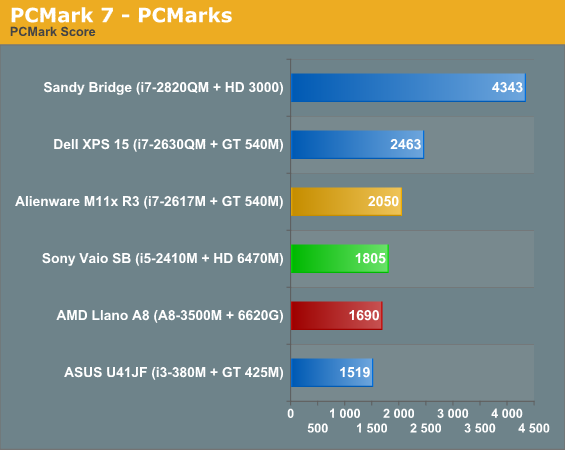

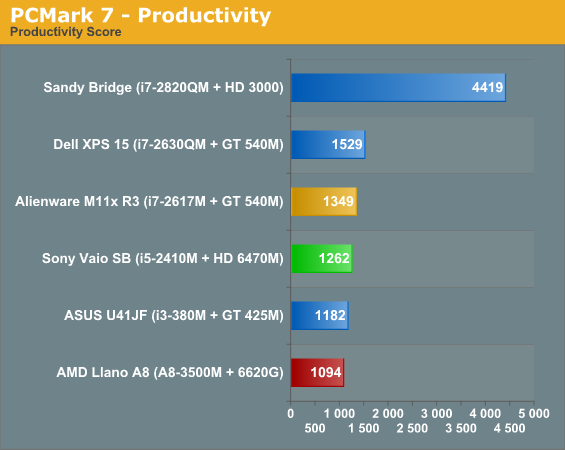
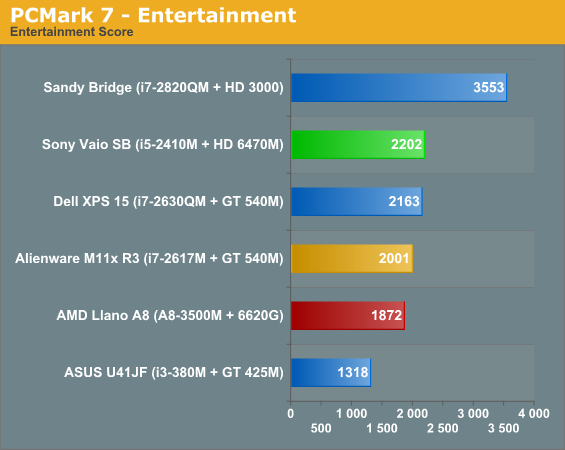
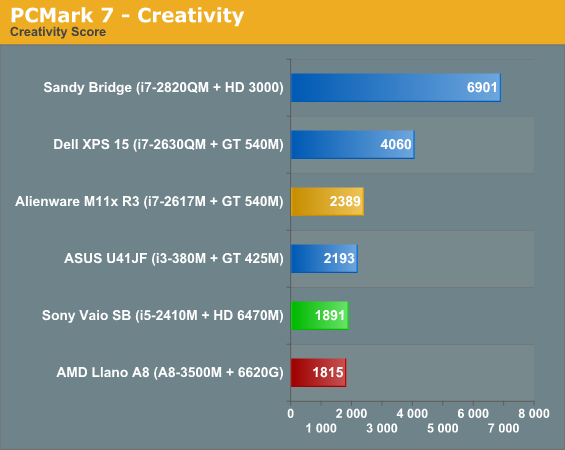
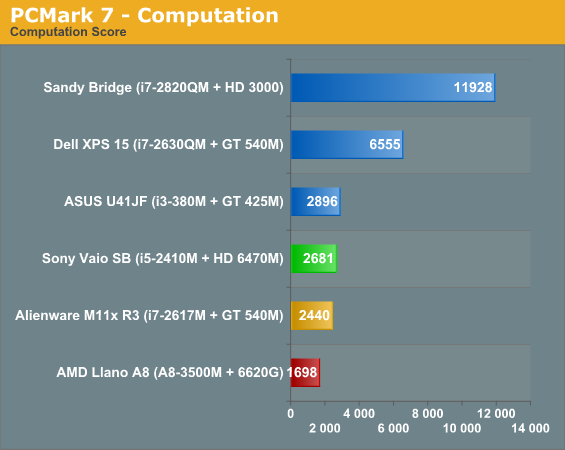
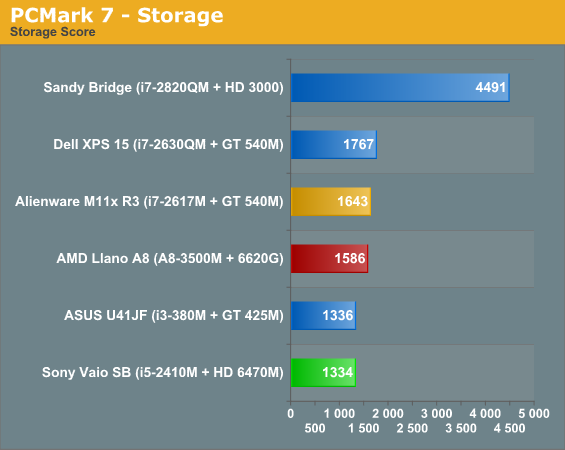
Once you get to the storage subscore (where our SSD-equipped Sandy Bridge reference platform excels), you can see just how bad things are with the VAIO S' 5400RPM drive. Now you understand what I mean when I tell you that when you order the notebook, get at least a 7200RPM hard drive upgrade—or plan on doing an SSD upgrade on your own.
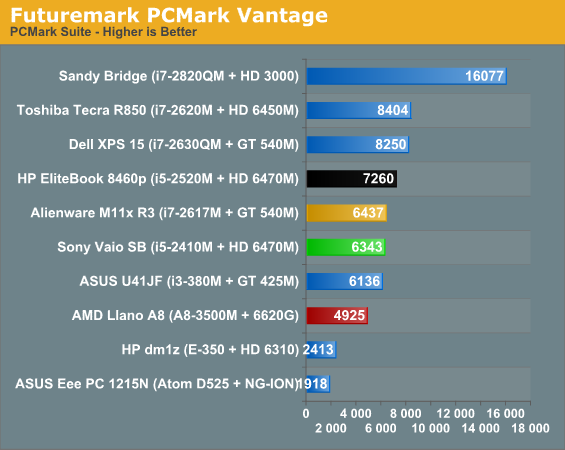
Under PCMark Vantage the VAIO S fares at least a little better. You'll notice I've included benchmarks for Atom and the E-350 in this chart and others; when we get to the battery life testing you'll see why. It's true those platforms cost at least a third as much as the VAIO S, but the VAIO S itself can still be had for under a grand, and there are some very good arguments to be made for going that route.
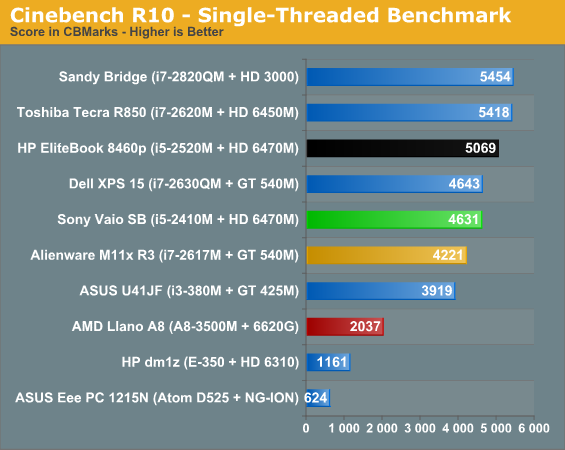
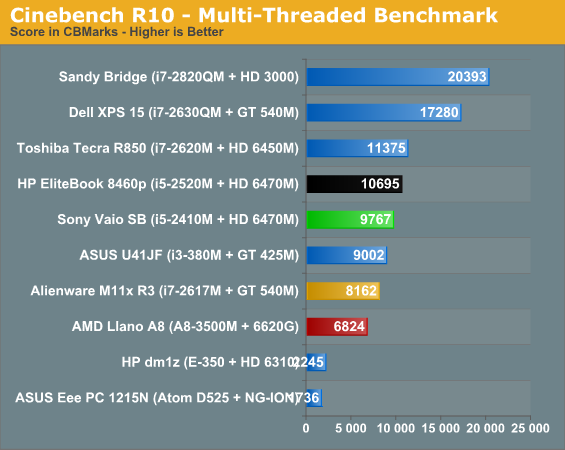
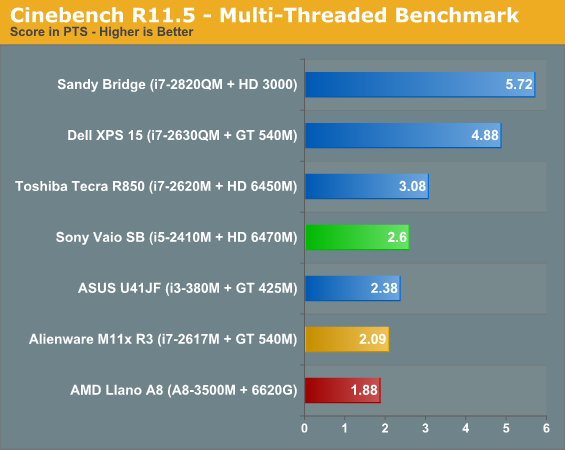
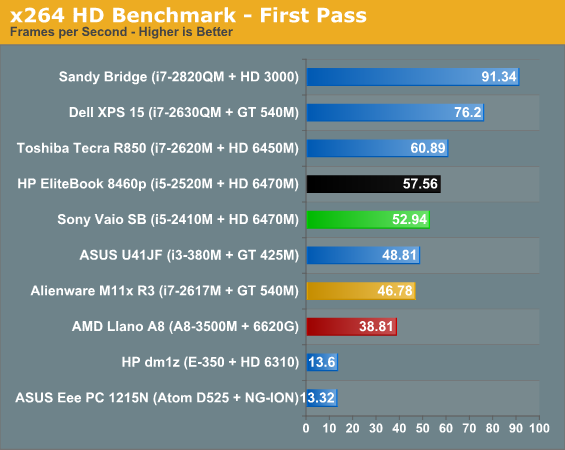

Into our proper application tests, the VAIO S starts to hit its stride. The Core i5-2410M at its heart may be Intel's slowest Sandy Bridge i5, but it's still a Sandy Bridge i5 and the scores reflect that. Performance is right where we want it to be, and the single memory channel in our review unit doesn't seem to hamper it too badly.
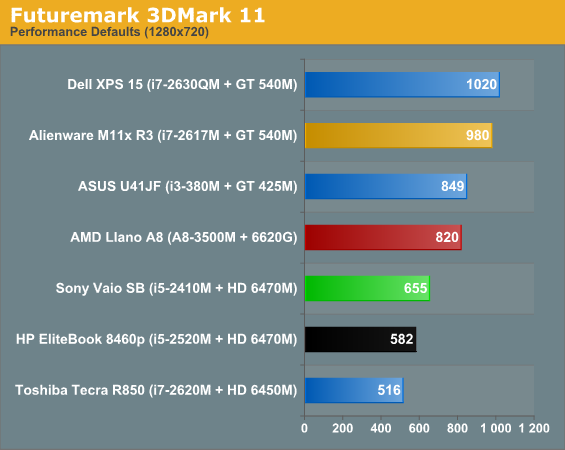
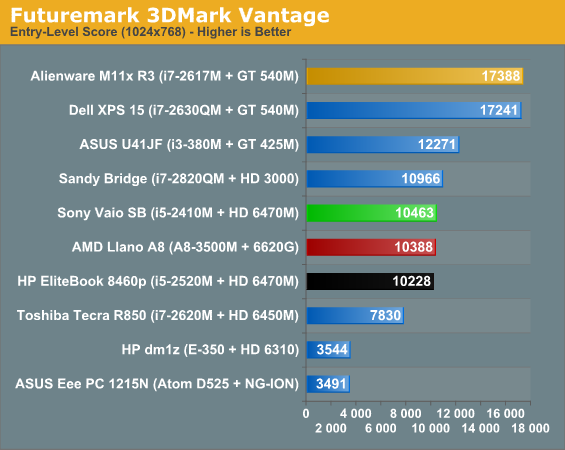
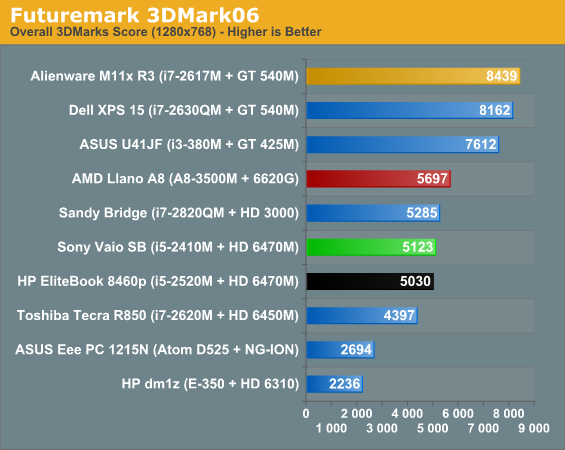
Back with Futuremark, the 3DMarks seem less kind to the VAIO S again, but this time they have it coming in behind Intel's HD 3000 integrated graphics hardware. This isn't wholly unexpected since the AMD Radeon HD 6470M is fairly anemic to begin with, but it's not really representative of real world performance either. End users might benefit more from Intel spending time optimizing for actual games instead of 3DMark.










70 Comments
View All Comments
Brad4 - Friday, September 9, 2011 - link
Thanks for the news update. I also like Sony products, but I'm going to pass on this one. The first thing I scanned for was the display, and I was disappointed to see yet another 16:9 monitor. This would be a nice portable dvd player, but horrible for real productive work.tmensonides - Friday, September 9, 2011 - link
Is there anyone out there now doing differently? I think alienware, hp, dell, lenovo all dropped their 1920*1200 options from their laptop lineups...their might be a few 1440*900 left but i haven't looked.....and certainly not on a 13....I agree though, 16:9 is not great for working....i wonder at the engineers who design these things and then have to actually use them....must be a marketing dept mandate or something
Dustin Sklavos - Friday, September 9, 2011 - link
Honestly, good luck with that. 16:10 is dead. At some point you're just going to have to suck it up, buttercup, and either buy a used 16:10 notebook with outdated hardware, an Apple MacBook Pro for as long as those 16:10 panels last (hint: probably not long), or cope with having ONLY 1600x900 available in a 13.3" form factor, which in my experience is still the highest resolution I've ever seen on a 13" notebook.quillaja - Friday, September 9, 2011 - link
You forgot the 1920x1080 13.3" screen on the Sony Z series. I wish that screen was an option on the S.bennyg - Thursday, September 15, 2011 - link
I would love to see a good hi res screen on a 12/13/14 incher. And a sane one not the Veyron of laptops (Vaio Z) - "spec to the max price bedamned". Can't understand why Asus haven't offered the high-end SKUs of the U36 models with high-res screens.---
Having used both WUXGA and 1080p on my last two 15 inch lappys, aspect doesn't mean anything, screen quality is much more important than 120 vertical pixels.
sferrin - Saturday, September 10, 2011 - link
The OP has a point and it's not so much the resolution as it is the ratio. I have a 790Z with the 1600 x 900 screen and it's a pain in the ass for some work as it's like looking through a slot. I hadn't really noticed how bad it was until I had my dinosaur Sony Z1 with a 1400 x 1050 screen out at it felt like I had a TON more space. I love that thing (if it had updated guts and say a 2000 x 1500 display, or even 1600 x 1200 I'd prefer it over my 790z for everyday stuff).seapeople - Wednesday, September 14, 2011 - link
Honestly I would prefer the 1600x900 over a 1400x1050 if I'm using just one screen. With 1600x900 you can actually put more than one thing on the screen side by side, while with the 1400x1050 you're pretty much stuck using just one application (albeit with more vertical space).Ushio01 - Friday, September 9, 2011 - link
Then get the 1600x900 upgrade 100 more vertical pixels than the old 16:10 1280x800 used to offer.retrospooty - Friday, September 9, 2011 - link
"Then get the 1600x900 upgrade 100 more vertical pixels than the old 16:10 1280x800 used to offer. "1600x900 is better than 1280x800, but in the marketplace its really replacing the 1680x1050 res. Still a step down. Especially vertically (particularly)
Ushio01 - Friday, September 9, 2011 - link
Please point me to a 13" laptop that ever had a 1680x1050 display?If you mean desktop monitors it's 1920x1080 that are replacing 1680x1050 with IPS screens to boot.